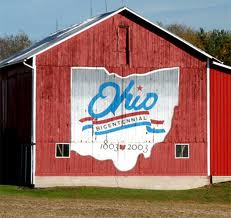Last year, the solar industry experienced a significant increase in sales and production. The expansion of accessible, renewable energy aligns with President Biden’s climate change prevention goals. He established the Build Back Better plan upon entering office, setting an ambitious carbon neutrality objective.
The plan delivered two trillion dollars to the clean energy sector, extending associated tax incentives. Biden’s financial aid helps residents and small business owners invest in renewable power systems. We can achieve the president’s carbon neutrality goal by establishing an electric grid.
The Electric Grid
In 2020, nearly 60% of the national power supply will be derived from fossil fuels. During combustion, the energy source generates greenhouse gas emissions. When the pollutants reach the atmosphere, they cause adverse environmental impacts.
Earth uses a natural temperature control process, reliant on a specific atmospheric composition. When sunlight reaches the planet, it generates heat, warms the surface, reabsorbs excess energy and releases it to space. The process creates life-sufficient temperatures on Earth.
When greenhouse gases pollute the atmosphere, they alter the organic composition. Air pollutants have a higher solar radiation-to-heat conversion rate, generating more heat than naturally occurring elements. They also hold warmth in the environment for extended periods rather than sending it back to space.
The entrapment and overproduction of heat increase the global temperature over time. When we develop an electric grid, we can decrease the enhanced greenhouse effect and preserve the atmosphere. Generating a renewable energy-driven grid can reduce our reliance on fossil fuels as well.
Creating a clean electric grid requires mass quantities of renewable power. Fortunately, the agricultural industry recently began adopting clean energy production devices. The electric grid can connect with local farmers, accessing adequate amounts of solar and wind power.
Various farmers invest in solar power, utilizing their high sun exposure regions and attaining up to three times more in profits than crops. When we store this energy, we can decrease our reliance on fossil fuels and shrink our national footprint.
A Modern Example
Currently, an old power plant in Monterey, California, is expanding renewable energy storage capability. Professionals converted unused smokestacks into lithium-ion battery holders. One battery can hold 300 megawatt-hours of wind and solar power.
The storage facility plans to install an additional 100-megawatt battery. With both systems in use, the plant may support a portion of California’s energy demands during peak hours. The state recently set an ambitious climate change prevention goal.
California aims to source 100% of its energy from renewable sources by 2040. They must generate a significantly higher quantity of clean power to achieve their goal. Additionally, energy storage technology must advance, meeting state-wide demands.
Agriculture and Advancements
Various American farmers adopted renewable energy devices, decreasing their reliance on inconsistent utility costs. The oil and gas industry alters prices regularly, depending on political disputes and transportation processes. Unpredictable costs drove many farmers out of businesses over the years.
Fortunately, solar and wind power lower or eliminate a farmer’s utility costs and provide a passive form of income. Farmers can improve their profits by storing excess clean energy and developing a community electricity grid. Like renewable power plants, they can utilize conventional processes and old systems to generate and hold renewable electricity.
On-site grain storage systems hold 46% of the national agricultural supply. Farmers may connect with environmental engineers and scientists, developing a renewable power storage method using excess agrarian materials. Grain storage devices release the particles based on real-time demands.
An electric storage device must also release its holding according to consumer demands. Researchers may merge the devices, accessing electric grid energy containment and support. We must additionally improve utility-scale battery storage, extending beyond behind-the-meter (BTM) technology.
The Future of Agriculture
The renewable energy sector and agricultural industry can support each other in their development. Crop production is reliant on adequate weather conditions, water sourcing and soil health. Limiting our greenhouse gas emissions can preserve organic environmental conditions and increase farmers’ access to water.
In return, farmers may utilize their land for renewable energy production. Over time, the electric grid may rely on the agricultural industry, improving their profits and lowering the national carbon footprint.



